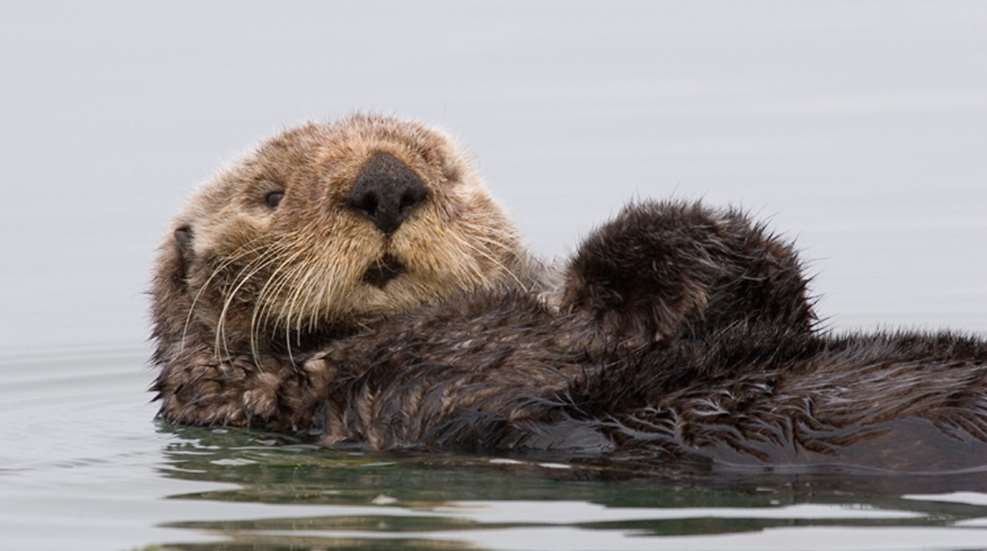
When you think “otter,” you probably think of a whimsical, playful animal, and it's certainly easy to see why. The shape of their mouths makes them appear to be smiling, much as dolphins do, and their puppylike interactions with one another are a delight to zoo visitors everywhere. That's why it may surprise you to learn that otters are actually members of the weasel family (Mustelidae)...and they have a bit more in common with some of the other residents of the otter’s family tree, such as the wolverine, than you'd guess. Here are four things you probably didn't know about the otter.
1. The main difference between otters and the other large mustelids like wolverines and honey badgers is that these semiaquatic critters are social, cooperative and not particularly aggressive with each other. They tend to live in family groups, bunking, hunting and eating together.
2. Although most subspecies prefer freshwater territory, sea otters thrive in saltwater littoral areas. (The photo at the head of this article is of a sea otter in Morro Bay.) Otters do spend time on land, making their burrows close to the water’s edge, but they are at their most graceful and at ease in the water. Their long, streamlined bodies feature tiny ears, muscular necks and a long, tapered tail that takes up at least one-third of their body length. They use these tails, as well as their webbed feet, to propel themselves through their favored element. Otters can remain underwater for almost 4 minutes, and swim about 7 miles an hour!
3. As friendly as otters are with one another, they are predators...and highly effective ones, at that. In South and Central America, the giant river otter is known as "ariranha," which means "water jaguar," and "lobo de río," which means "river wolf." Their primary food source is fish, although crustaceans and molluscs are on the menu. Unlike many other predators such as cats and dogs, otters have large molars that they can use to crush the shells of the crustaceans they frequently eat. Sometimes they don't feel like doing that, though; in that case they'll use rocks to smash open the hard-shelled critters. This makes them one of the only non-primate mammal species that uses tools. Several otters will often form cooperative hunting groups, although they usually catch their prey by concealing themselves until they can make a fast, short strike.
4. The otter’s fur is the densest in the world, with a quarter-million to one million hairs per square inch. Its fur is so dense that the otter's skin never actually becomes wet; instead, air is trapped in the hairs and helps keep the otter warm even in extremely cold water. This dense, velvety fur was highly prized in the eighteenth, nineteenth and the twentieth centuries, and sadly overtrapping has caused some subspecies to become endangered. Other subspecies are at healthier levels and can still be trapped legally in limited, scientifically managed numbers in some areas.
Photo by Mike Baird, bairdphotos.com.






































